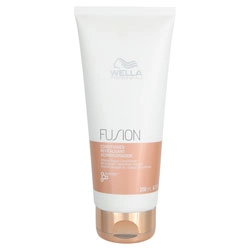Conditioners: Leave-in vs. Rinse Out
One of the most used hair care products, conditioners, add shine, body, moisture and nourishment to the hair as well as help to detangle it. So what's the difference between a conditioner you apply and then rinse out vs. a conditioner you apply and leave-in?
Leave-in conditioners are very lightweight and free of oils so the hair is not weighed down. They're best used to keep hair soft, shiny and manageable. This makes a leave-in conditioner perfect for those with thin or fine hair as they add body. They are also great for those with very coarse or brittle hair because the moisture stays in the hair, smoothing the hair cuticle as it detangles, giving more control and making it easier to style.
When choosing a leave-in conditioner, it is very important to check the ingredients. As the name implies, the product is going to stay on your hair and scalp all day. You want to be sure the product does not contain ingredients you don't want to linger on your skin.
Rinse out conditioners are generally used after shampooing, although using them before you shampoo can treat your hair without adding the heavier weight. Rinse-out conditioners contain fatty acids and oils which make them thick. They are meant to stay on the hair for 3 - 5 minutes and then be thoroughly rinsed out. Conditioners can be acidic which can irritate the skin so if you skin is sensitive you should look for a low-acid product.
These types of conditioners can address multiple hair problems; they are not just to detangle. When selecting this type of conditioner, choose the product that addresses your hair needs.
Conditioners vary widely in their ingredients:
- Acidity regulators that maintain hair's pH and help smooth and strengthen hair.
- Antistatic agents like cationic polymers that bind to hair surface to reduce static. They have a positive charge so they deposit easily to hair which is negatively charged.
- Glossers, light reflecting chemicals like silicones that add shine.
- Lubricants such as fatty alcohols, emollients like panthenol, dimethicone to detangle hair.\ and make it softer.
- Preservatives to prevent bacteria and yeast growth in the product.
- Moisturizers that have a high proportion of humectants, mostly provided by natural oils.
- Hydrolyzed proteins to penetrate the hair to add strength.
- Sequestrants to help the product work better with hard water.
- Sunscreens likebenzphenone-4 and ethylhexyl methoxycinnamate to protect hair and help prevent color loss.
- Surfactants such as keratin.
- Thermal protectors, heat absorbing polymers that shield the hair from excessive heat from styling tools.
What's best?


 write a review
write a review

